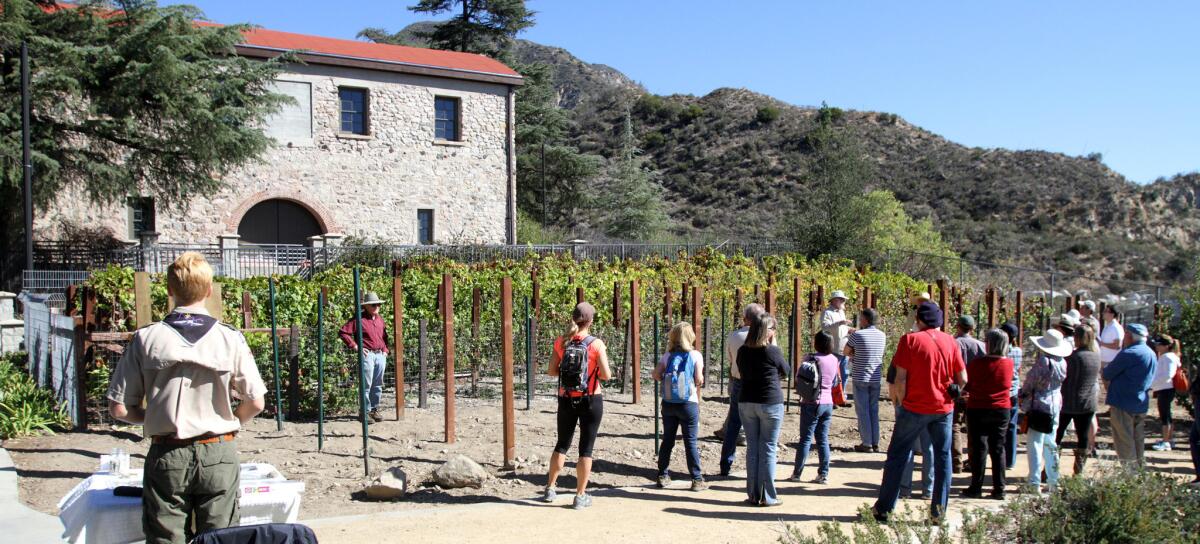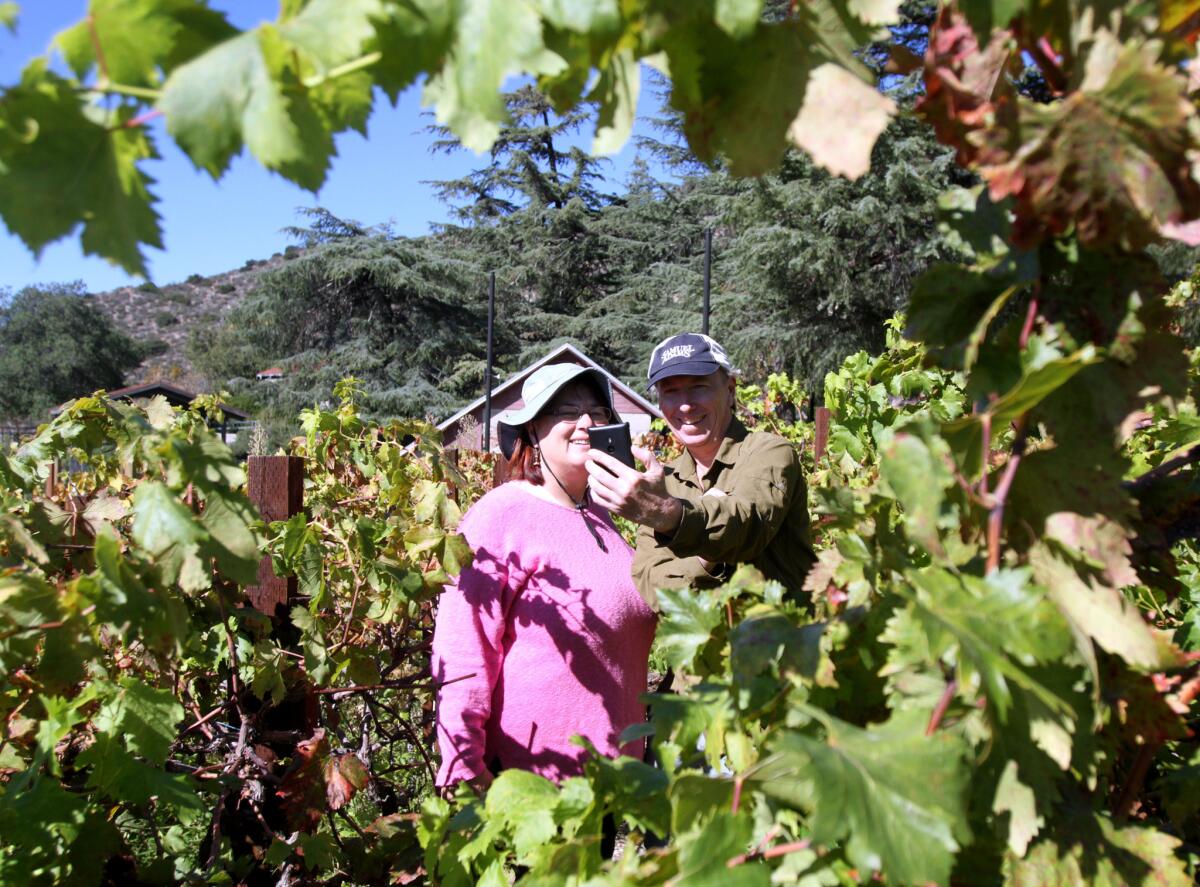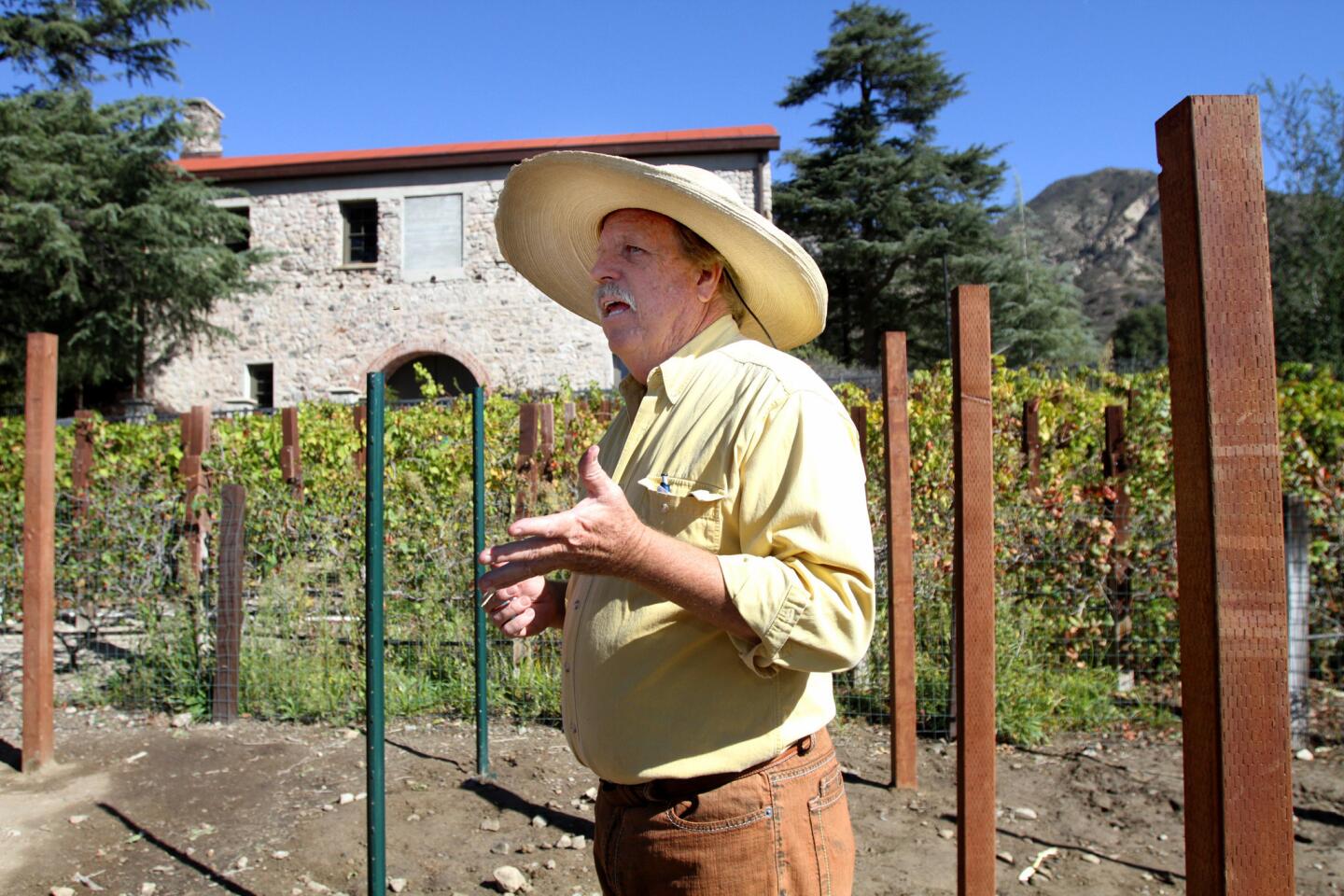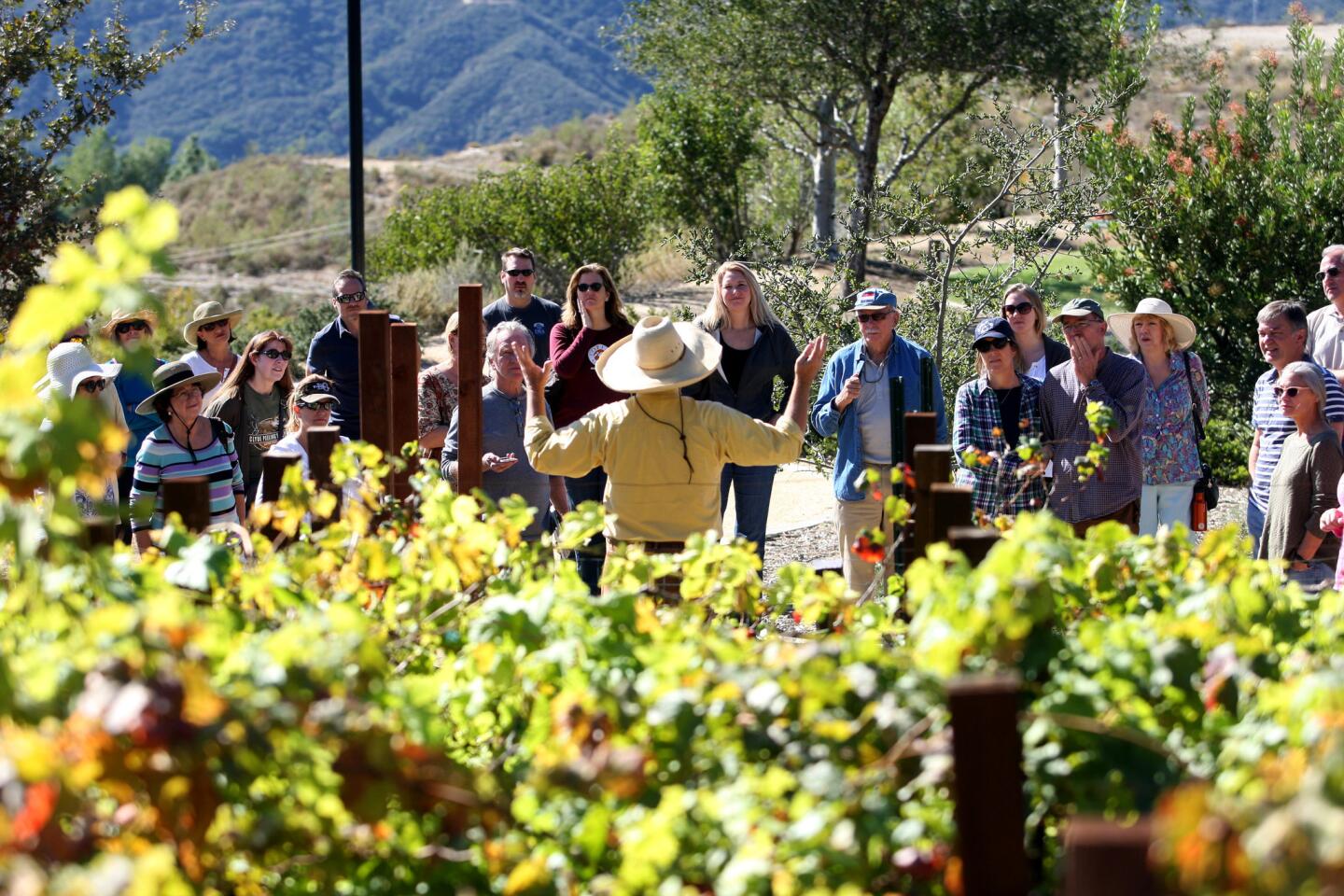Wine has notes of historic flavor at Le Mesnager Barn
- Share via
Napa Valley is probably the first place that comes to mind when talking about California wine, but as a few dozen people learned this past Saturday during a trip to the Le Mesnager Barn in La Crescenta, the state’s wine legacy has Los Angeles to thank.
About 50 people walked the grounds of the century-old stone barn at Deukmejian Wilderness Park, learning about the history of wine on the land and in the area, as well as its impact on today’s market.
The event was part of Glendale’s Trails and Open Space program, which includes interpretive programs like Saturday’s, as well as restoration projects, according to city Senior Administrative Analyst Marc Stirdivant.
“A lot of people don’t realize that Southern California was a big wine-producing region back in the day,” Stirdivant said.

A large crowd attended the History of Winemaking in the Crescenta Valley event at Deukmejian Wilderness Park in Glendale on Saturday, November 7, 2015. After an informational talk about the area, attendees got a brief tour of the vineyard next to the Le Mesnager Barn at the park.
The curious crowd was given a guided tour by Stuart Byles, a wine historian who wrote a book last year chronicling the industry in Los Angeles going back into the 19th century.
“Los Angeles was a place where there was more vines, more vineyards, more wineries than there were up in the Bay Area,” Byles said. “Most people forget that without Los Angeles starting everything in the 19th century, [Northern California wine] wouldn’t be where they are today.”
Byles told attendees about the history of the stone barn, which was completed in 1915 by the Le Mesnager family. George Le Mesnager was a French immigrant who bought the land in 1898.

Stuart Byles from the Stone Barn Vineyard Conservancy lead a tour of the grounds during the History of Winemaking in the Crescenta Valley event at Deukmejian Wilderness Park in Glendale on Saturday, November 7, 2015. After an informational talk about the area, attendees got a brief tour of the vineyard at the park.
Wine production on the property started to wind down in the 1930s and, after first being sold to a developer in 1960, the city of Glendale bought the property in 1988 to create the 709-acre Deukmejian Wilderness Park.
As the people in attendance walked the grounds, they got an up-close look at old winemaking equipment, the stone barn and a small vineyard, which grows a few different varieties of grapes.
One of those grapes, the Alicante Bouschet, is harvested and made into wine by members of the Stone Barn Vineyard Conservancy, part of the Historical Society of the Crescenta Valley.
The conservancy maintains the vineyard but cannot sell the wine, so instead it gives bottles as a membership benefit, or, as Saturday’s crowd learned, samples on special occasions, such as the 100th birthday celebration of the stone barn’s completion.
On a terrace overlooking La Crescenta, wine aficionados and novices alike helped themselves to a drink made from grapes grown just a few yards away.
La Crescenta residents Len and Mary Kuhn said they appreciated the history lesson they’d gotten during their walk around the area.
“I didn’t know that La Crescenta was known for their wineries,” Mary Kuhn said.
“We knew that this one was here, but we certainly didn’t know the great quantity of them all over the area,” Len said.
Asked if they were wine aficionados, Len replied with a laugh: “Good grief, no … (we’re) ‘Two Buck Chuck’ lovers,” referring to the inexpensive Charles Shaw brand wines.

Ann Kramer, left, and Erik Siering, right, take a selfie in the small vineyard during the History of Winemaking in the Crescenta Valley event at Deukmejian Wilderness Park in Glendale on Saturday, November 7, 2015. After an informational talk about the area, attendees got a brief tour of the vineyard at the park.
On the other end of the spectrum was George Skorka, originally from Hungary, who said he used to make wine in Pasadena and currently grows wine grapes in Santa Clarita.
Skorka brought his 4-month-old Bernese mountain dog, Hugo, and said the 2010 vintage offered for tasting was the standout.
“Without wine, life is much less interesting,” he said.
Skorka spoke with a romantic air about the historical and social importance of wine, a human tradition millennia in the making.
“Look at them — strangers just lingering around,” Skorka said, motioning to the people drinking and socializing on the stone barn’s terrace. “And even when we don’t pour so much, the little soul is better.”
The stone barn itself is closed off to the public, but Marc Stirdivant said Glendale plans to turn the barn and the grounds around it into an interpretive and nature education center where people can learn about the natural history of the region.
City planners had previously sought bids for the project, which would include mechanical, electrical and plumbing renovations, but the bids came in too high for the City Council’s liking.
On Nov. 17, Planning Section officials will again seek approval from the council to go out and find bids for the renovation work.
“We hope to get started on that in the coming year and have it done in 2017,” Stirdivant said.
Byles explained the plans to the crowd standing next to the vineyard, many of whom expressed hope in seeing the barn preserved and open for visiting soon.
“It’s just a matter of time and money,” he told them.
--
Ryan Fonseca, ryan.fonseca@latimes.com
Twitter: @RyFons






